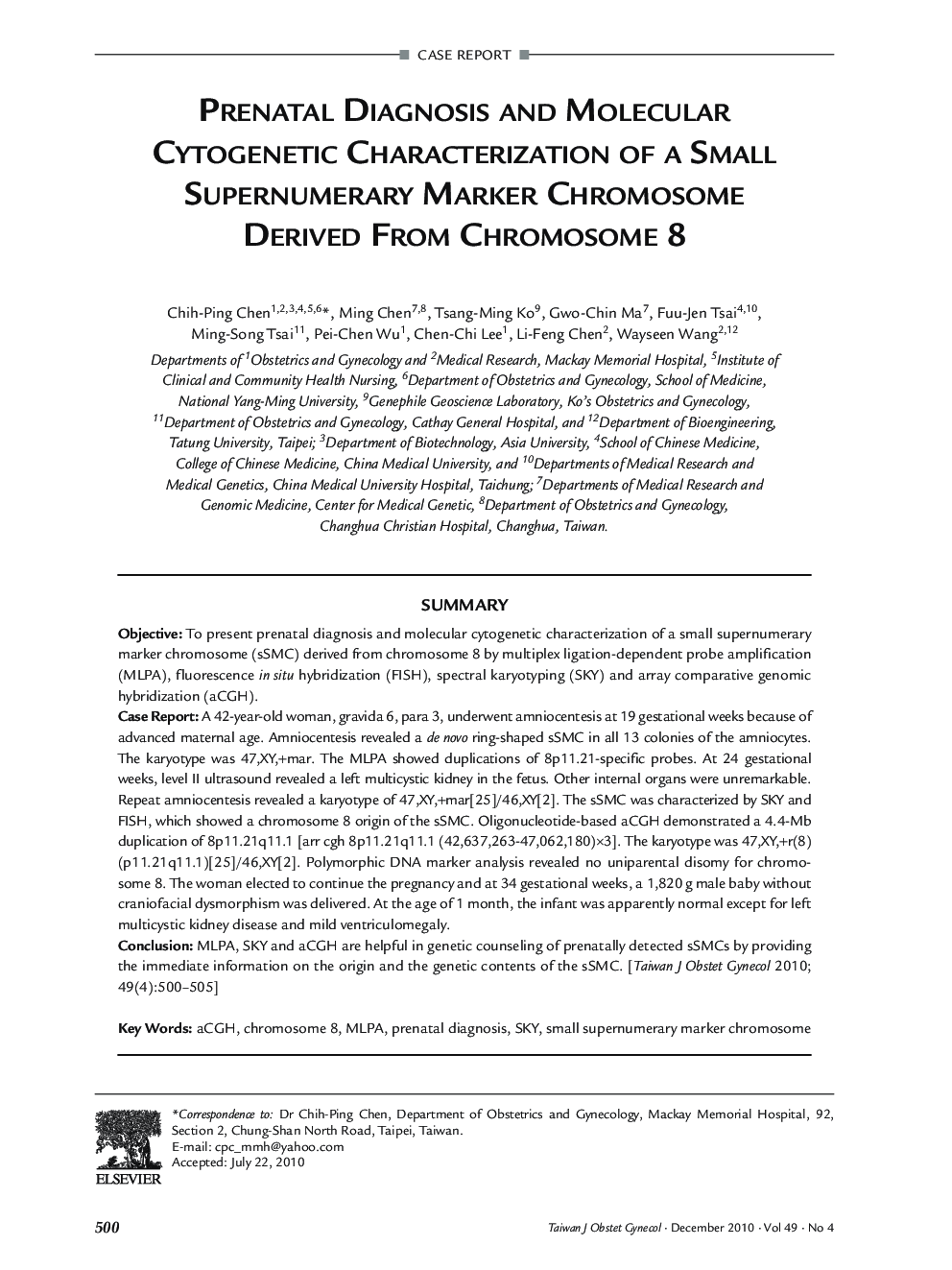| Article ID | Journal | Published Year | Pages | File Type |
|---|---|---|---|---|
| 3975883 | Taiwanese Journal of Obstetrics and Gynecology | 2010 | 6 Pages |
SummaryObjectiveTo present prenatal diagnosis and molecular cytogenetic characterization of a small supernumerary marker chromosome (sSMC) derived from chromosome 8 by multiplex ligation-dependent probe amplification (MLPA), fluorescence in situ hybridization (FISH), spectral karyotyping (SKY) and array comparative genomic hybridization (aCGH).Case ReportA 42-year-old woman, gravida 6, para 3, underwent amniocentesis at 19 gestational weeks because of advanced maternal age. Amniocentesis revealed a de novo ring-shaped sSMC in all 13 colonies of the amniocytes. The karyotype was 47,XY,+mar. The MLPA showed duplications of 8p11.21-specific probes. At 24 gestational weeks, level II ultrasound revealed a left multicystic kidney in the fetus. Other internal organs were unremarkable. Repeat amniocentesis revealed a karyotype of 47,XY,+mar[25]/46,XY[2]. The sSMC was characterized by SKY and FISH, which showed a chromosome 8 origin of the sSMC. Oligonucleotide-based aCGH demonstrated a 4.4-Mb duplication of 8p11.21q11.1 [arr cgh 8p11.21q11.1 (42,637,263-47,062,180)×3]. The karyotype was 47,XY,+r(8) (p11.21q11.1)[25]/46,XY[2]. Polymorphic DNA marker analysis revealed no uniparental disomy for chromosome 8. The woman elected to continue the pregnancy and at 34 gestational weeks, a 1,820 g male baby without craniofacial dysmorphism was delivered. At the age of 1 month, the infant was apparently normal except for left multicystic kidney disease and mild ventriculomegaly.ConclusionMLPA, SKY and aCGH are helpful in genetic counseling of prenatally detected sSMCs by providing the immediate information on the origin and the genetic contents of the sSMC.
